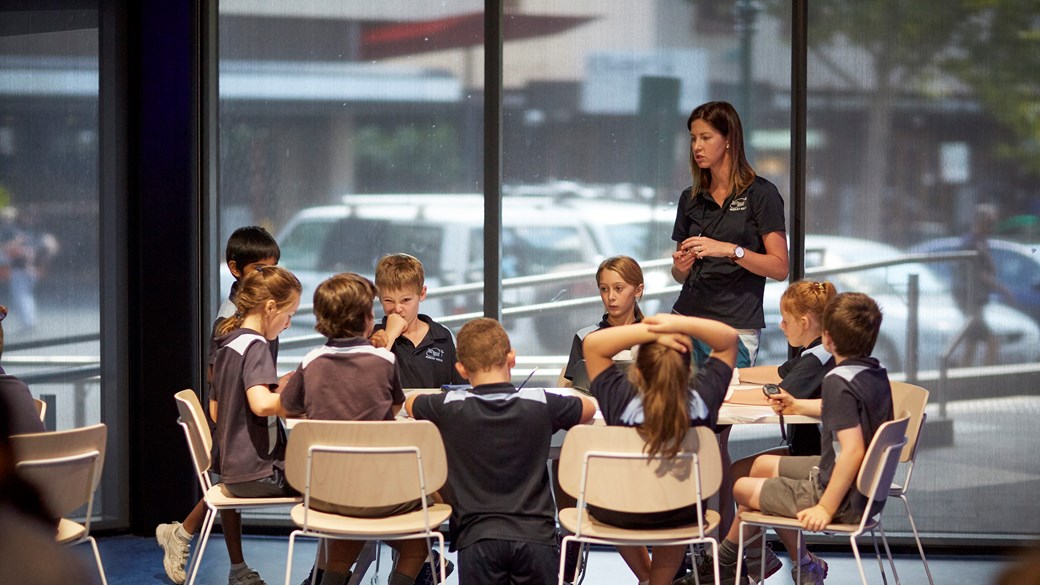
What's Your Story?
Classroom activities and resources to enable students to investigate the five migration stories represented in the learning kit.

Classroom activities and resources to enable students to investigate the five migration stories represented in the learning kit.
The activities support the Victorian Curriculum F-10. The kit is suited to levels 3–9 across a variety of domains including Intercultural Capabilities, History, Civics Citizenship and Geography.
Teachers can familiarise themselves with the kit before it arrives by viewing some examples of kit objects and reading the migration stories.
Take the objects/photographs out of the kit. Look at each object and consider these questions:
Using the objects in the case and/or other objects.
The objects in the kit and/or other objects can be displayed in many ways. This is the work of the exhibitions team at Melbourne Museum, Scienceworks and the Immigration Museum.
You may wish to create your own exhibition at your school. You might like to include objects from people in your class, parents or grandparents in your exhibition. When developing your exhibition decide who will do which task, for example, what are the themes of your exhibition? How will you set up the object displays, and why? When writing labels, what information do you need to describe each object?
The questions below will help you to set up you own exhibition:
Exhibition jobs
Making History online resource can assist students to investigate objects in the kit or their own objects and stories and make movies about them.
Go to What's Your Story? home
Discuss the concept of museums:
Museum Victoria's Migration and Cultural Diversity Collection records the different cultures of Victoria's population since European settlement in the 1830s and contains over 6200 items. Each item has a unique story and provides insight into the lives of the people who used it.
For a new object to join the collection it needs to be significant and important. Curators need to record and research each object in the collection so that others can learn about the object as well. Items usually have to be stored in cool temperatures and dry conditions. Sometimes they need to be repaired or preserved in some way; this is the job of a person called a conservator. A fraction of the museum's collections are displayed for the public in the galleries but many objects can be viewed online at Museums Victoria Collections.
Go to What's Your Story? home
The Learning Areas addressed by the ‘What’s Your Story’ kit, are all identified in the Victorian Curriculum F-10: Home - Victorian Curriculum (vcaa.vic.edu.au)
Learning Area: Intercultural Capability
Intercultural Capability - Rationale and Aims - Victorian Curriculum (vcaa.vic.edu.au)
Intercultural interactions have become a part of everyday life in our increasingly multicultural and globalised world. Developing intercultural knowledge, skills and understandings is an essential part of living with others in the diverse world of the twenty-first century. The Intercultural capability curriculum assists young people to become responsible local and global citizens, equipped for living and working together in an interconnected world.
Learning Area: Humanities - Civics and Citizenship
Civics and Citizenship - Rationale and Aims - Victorian Curriculum (vcaa.vic.edu.au)
Civics and Citizenship is essential in enabling students to become active and informed citizens who participate in and sustain Australia’s democracy. Through the study of Civics and Citizenship, students investigate political and legal systems, and explore the nature of citizenship, diversity, and identity in contemporary society. They gain the knowledge and skills necessary to question, understand and contribute to the world in which they live.
The Civics and Citizenship curriculum recognises that Australia is a secular democratic nation with a multicultural and multi-faith society and promotes the development of inclusivity by developing students’ understanding of broader values such as respect, civility, equity, justice, and responsibility. It acknowledges the experiences and contributions of Aboriginal and Torres Strait Islander peoples and their identities within contemporary Australia. While the curriculum strongly focuses on the Australian context, students also reflect on Australia’s position, and obligations, and the role of the citizen today within an interconnected global world.
Learning Area: Humanities – History
History - Rationale and Aims - Victorian Curriculum (vcaa.vic.edu.au)
History is a disciplined process of investigation into the past that develops students' curiosity and imagination. Awareness of history is an essential characteristic of any society, and historical knowledge is fundamental to understanding ourselves and others. It promotes the understanding of societies, events, movements, and developments that have shaped humanity from earliest times. It helps students appreciate how the world and its people have changed, as well as the significant continuities that exist to the present day. History, as a discipline, has its own methods and procedures which make it different from other ways of understanding human experience. The study of history is based on evidence derived from remains of the past. It is interpretative by nature, promotes debate and encourages thinking about human values, including present and future challenges. The study of history also provides opportunities to develop transferable skills of critical and creative thinking, such as the ability to explore questions, imagine possibilities and construct arguments.
Learning Area: Humanities – Geography
Geography - Rationale and Aims - Victorian Curriculum (vcaa.vic.edu.au)
The geography curriculum presents a structured way of exploring, analysing, and understanding the characteristics of the places that make up our world, using the concepts of place, space, environment, interconnection, sustainability, scale, and change. It addresses scales from the personal to the global and time periods from a few years to thousands of years.
Geography as a discipline integrates the natural sciences, social sciences, and humanities to build a holistic understanding of the world.
Go to What's Your Story? home

Museums Victoria acknowledges the Wurundjeri Woi Wurrung and Boon Wurrung Bunurong peoples of the eastern Kulin Nations where we work, and First Peoples across Victoria and Australia.
First Peoples are advised that this site may contain voices, images, and names of people now passed and content of cultural significance.